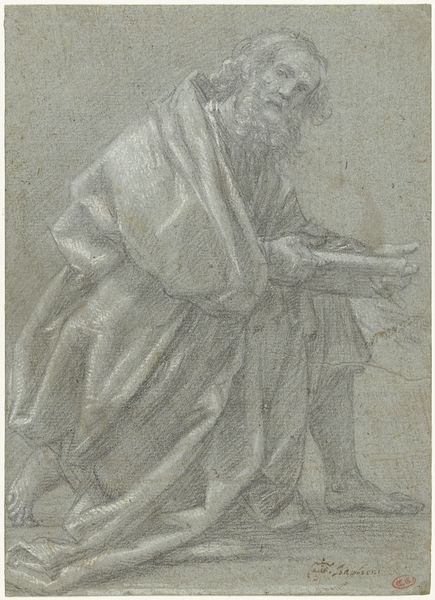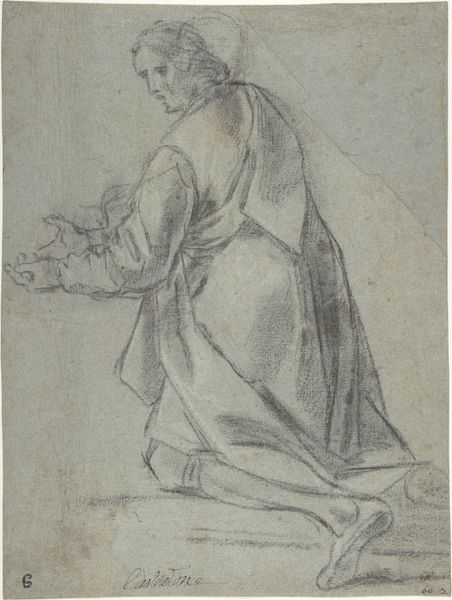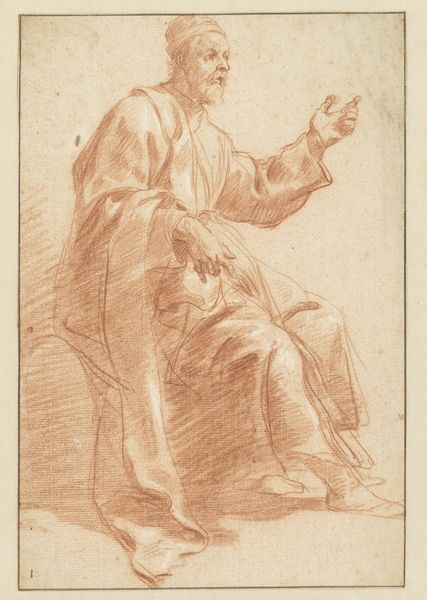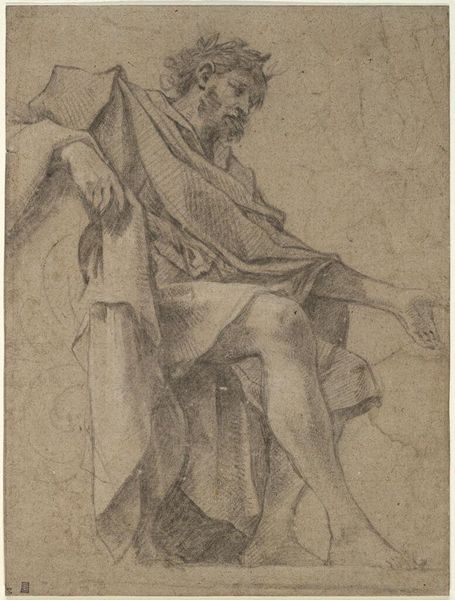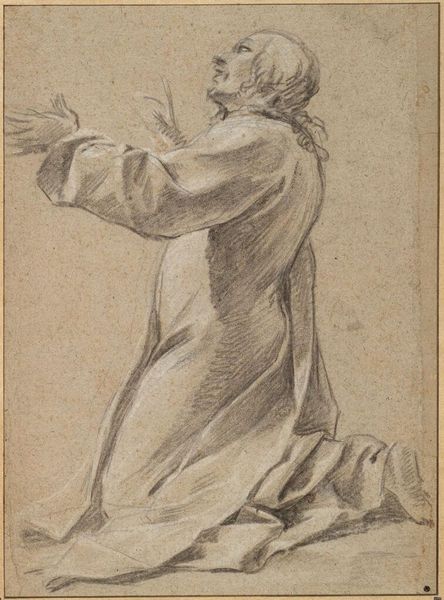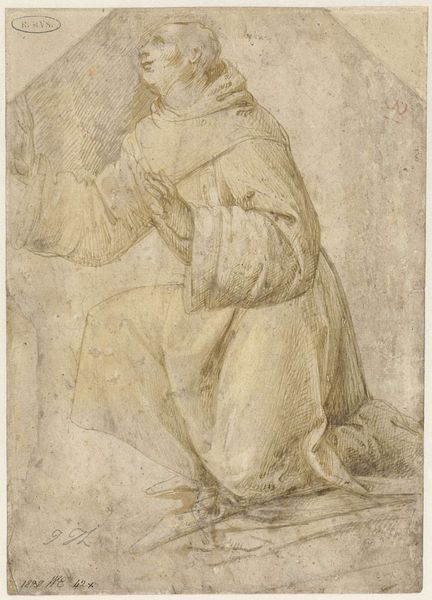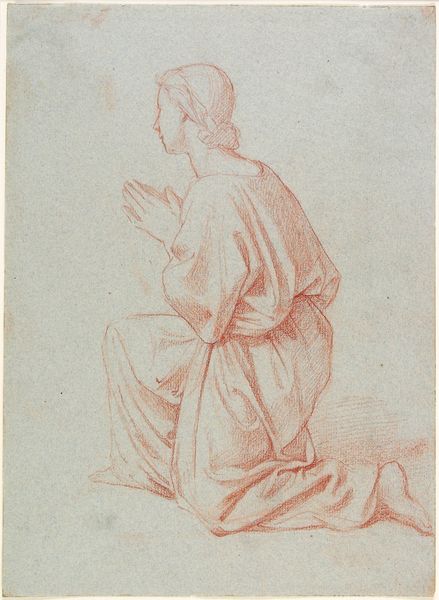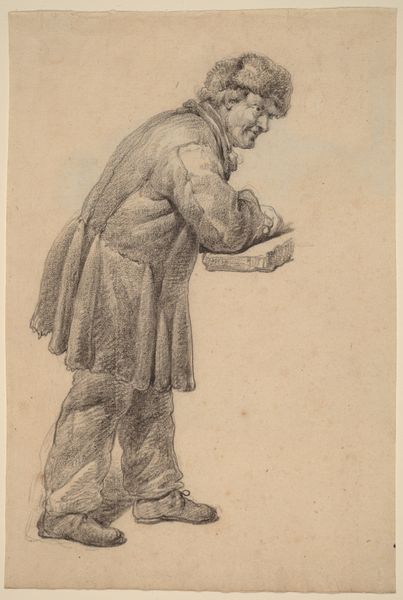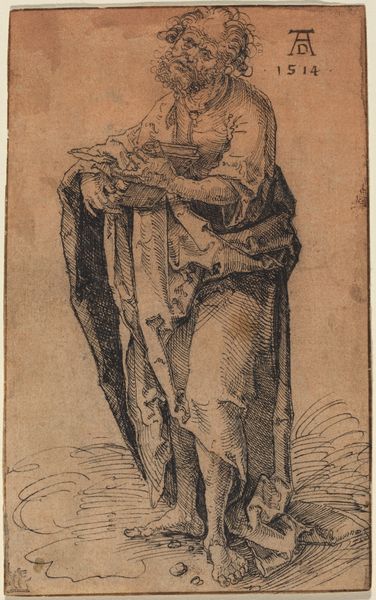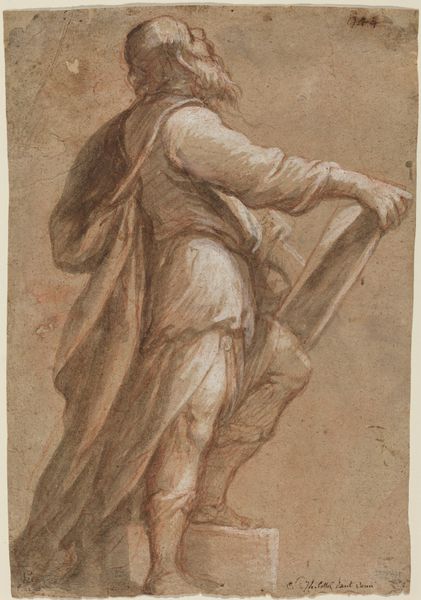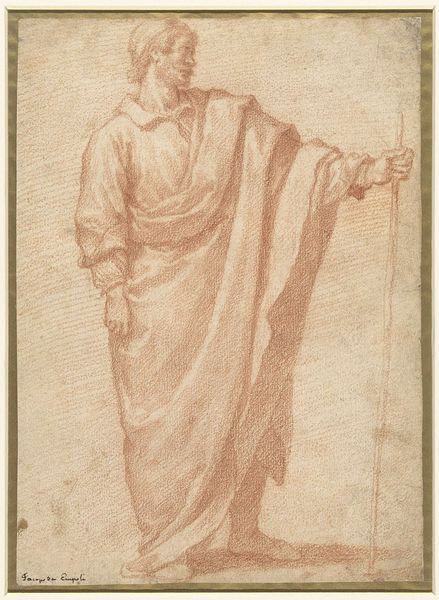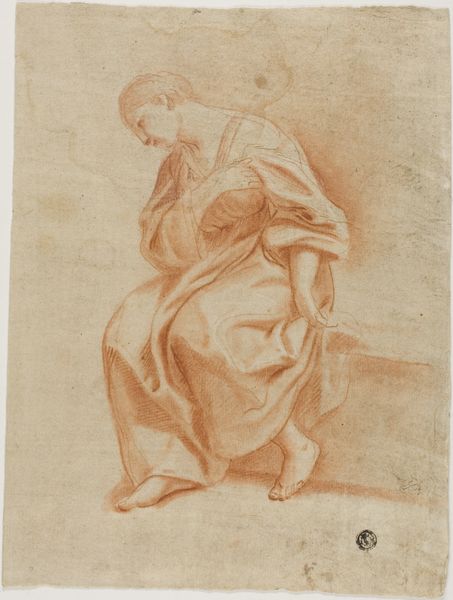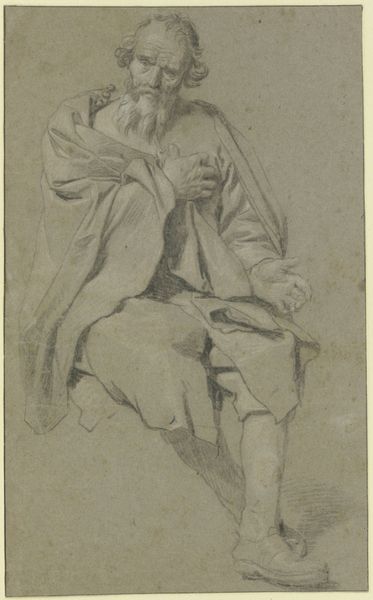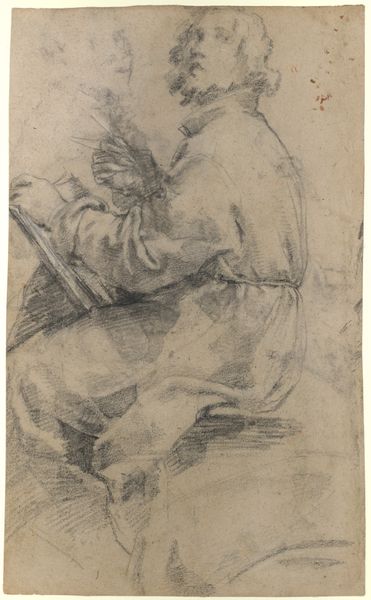
drawing
#
portrait
#
drawing
#
11_renaissance
Copyright: Public Domain
Editor: Here we have a drawing titled "Sitzender Prophet mit einer Tafel," or "Seated Prophet with a Tablet," by Domenico Cresti. It seems to be a Renaissance drawing. It's striking how much detail he gets with just red chalk. What can you tell us about its context? Curator: The representation of prophets gained prominence during the Renaissance, especially as monumental public art. Think about Michelangelo's Sistine Chapel. Cresti likely situates himself within a competitive art market vying for patronage by powerful religious institutions. Consider how the very act of portraying a prophet, presenting a visual interpretation of faith, was a bold political and artistic statement at that time. Does the figure's demeanor suggest anything to you? Editor: He looks contemplative, maybe burdened. I notice how the light seems to highlight the prophet’s gaze but leaves the tablet in shadow. Curator: Exactly. Is Cresti, by directing the gaze and muting the tablet, making a commentary on the societal role of prophecy itself? Perhaps questioning the burden of leadership? Who decides who has the right to interpret sacred texts, or lead congregations? Was it radical at the time to question the roles? Editor: That is fascinating. So, even a seemingly simple drawing like this reflects complex social and political considerations of the Renaissance. It gives a deeper context to artistic license. Curator: Indeed. It’s crucial to consider how the market influenced subject matter, technique, and even the subtle ways artists negotiated their own positions within societal hierarchies. Editor: Thank you, I never considered it could say so much.
Comments
No comments
Be the first to comment and join the conversation on the ultimate creative platform.
